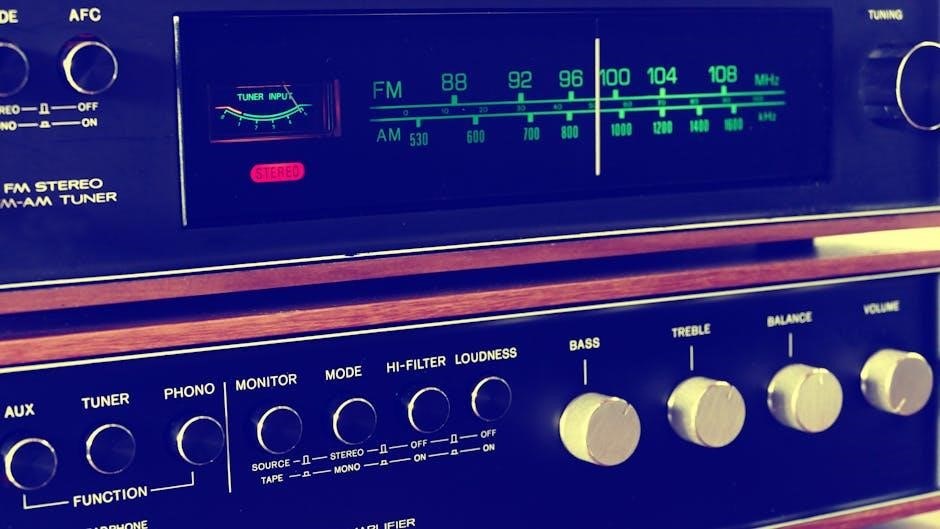Bass Exercises PDF: A Comprehensive Guide
Explore a curated collection of bass exercises in PDF format, designed to enhance your skills. Access resources covering scales, techniques, and grooves to elevate your playing.
Embark on a journey to master the bass guitar with a structured approach to exercises. These exercises are designed to improve your technique, timing, and overall musicianship. Whether you’re a beginner just starting with basic fretting and plucking, or an experienced player looking to refine your skills, a consistent practice routine is essential. Explore chromatic scales, movable scale patterns, and exercises focused on thirds, fourths, and fifths to build a solid foundation. Discover resources like the “Bass_Exercises.pdf” which contains a series of bass exercises in the key of G major, notated with musical notation. Consider incorporating exercises from methods like the Berklee Practice Method for Bass, which provides a comprehensive guide to learning bass guitar techniques, including rhythm exercises and various playing styles. Begin with the fundamentals and gradually progress to more advanced concepts to unlock your full potential on the bass. Remember, consistent practice is key to developing proficiency and musicality.

Essential Scales and Patterns
Delve into crucial scales and patterns to build a strong foundation for bass playing. Master chromatic scales and movable patterns to enhance your musical vocabulary.
Chromatic Scale Exercises
Enhance your bass technique with chromatic scale exercises, crucial for dexterity and finger independence. Practice chromatic scales across the strings and in shifting patterns to develop a solid foundation. Incorporate 4-finger patterns to maximize efficiency and speed. Use PDF resources to guide your practice. Explore exercises focusing on chromatic scales to improve your overall bass playing ability. Jamerson’s chromatic exercise is a valuable resource. Chromatic scales are fundamental for bassists looking to expand their skill set. Integrate these exercises into your daily routine for optimal results. Discover various approaches to playing chromatic scales to find what works best for you. Mastering chromatic scales will significantly enhance your playing. Remember to focus on accuracy and evenness of tone while practicing. These exercises are essential for building a strong technical foundation on the bass guitar. Consistent practice is key to mastering the chromatic scale and improving your overall bass playing.
Movable Scale Patterns
Unlock the fretboard with movable scale patterns, allowing you to play in any key with ease. These patterns provide a framework for improvising and creating bass lines. Practice moving scales across the neck to develop fingerboard knowledge. Download PDF resources containing various movable scale patterns for bass. Incorporate these patterns into your practice routine to improve your versatility. Movable scale patterns are essential for bassists seeking to expand their musical vocabulary. Explore different scale types and their corresponding movable patterns. Learning these patterns will help you navigate the fretboard more efficiently. Use movable scales to build bass lines and create interesting melodic ideas. Adapt these patterns to different musical styles and genres. Master the ability to shift seamlessly between different positions on the neck. Movable scale patterns are a valuable tool for any bassist. Enhance your understanding of music theory by studying these patterns. Consistent practice is key to mastering movable scales. Experiment with different fingerings to find what works best for you.

Technique Development
Refine your bass playing with focused technique development. Enhance fretting, plucking, speed, and dexterity through targeted exercises. Access PDF resources for structured practice.
Fretting and Plucking Technique
Mastering fretting and plucking is crucial for a solid bass foundation. Exercises in this area focus on precision, clarity, and efficiency. Develop a consistent touch on the fretboard, ensuring clean notes and minimizing unwanted buzzing. Explore various plucking styles, from fingerstyle to using a pick, to find what suits your musical style. Practice alternating finger patterns to enhance speed and dexterity. Incorporate exercises that challenge your coordination between your fretting and plucking hands. Focus on achieving a balanced tone and volume across all strings. Use online resources and PDF guides for structured drills that target specific aspects of fretting and plucking. Consider exploring the Rabbath approach for double bass, which emphasizes efficient movement. Remember that consistent practice and attention to detail are key to improving your fretting and plucking technique, ultimately leading to greater control and expressiveness on the bass.
Speed and Dexterity Exercises
Enhance your bass playing with targeted speed and dexterity exercises. These drills are designed to improve finger strength, coordination, and overall agility on the fretboard. Begin with simple chromatic exercises, gradually increasing the tempo as your accuracy improves. Practice scales and arpeggios using alternate picking or fingerstyle techniques, focusing on evenness and consistency. Incorporate patterns that involve string skipping and wide intervals to challenge your hand positioning. Explore exercises that utilize all four fingers, developing independence and control. Utilize online resources and PDF guides that offer structured routines for speed and dexterity development. Consider the “stupidly simple exercise” mentioned online, which aims to level up your speed and technique. Remember to start slowly and gradually increase the speed to avoid developing bad habits or injuries. Consistent practice and focused attention on technique are essential for achieving significant improvements in speed and dexterity. Explore movable scale patterns and chromatic shifting patterns to further challenge your fingerboard mastery. Incorporate metronome work for precise timing and evenness.
Groove and Timing
Mastering groove and timing is vital for any bassist. Explore rhythm exercises and syncopated patterns to solidify your internal clock and create compelling bass lines. Use PDFs for structured practice.
Rhythm Exercises
Develop impeccable timing and rhythmic accuracy with these essential bass guitar rhythm exercises. Consistent practice is key to solidifying your groove and becoming a reliable bassist in any musical setting. Begin with simple patterns focusing on quarter notes, eighth notes, and sixteenth notes, gradually increasing complexity as your skills improve. Use a metronome consistently to maintain a steady tempo and identify areas where your timing may waver. Explore various rhythmic subdivisions and experiment with different time signatures to broaden your rhythmic vocabulary. Incorporate exercises that emphasize syncopation and off-beat rhythms to challenge your sense of timing and develop a deeper understanding of rhythmic nuances. Transcribe bass lines from your favorite songs and analyze the rhythmic patterns used to gain further insight into creating compelling grooves. Focus on maintaining a relaxed and consistent hand position to ensure a smooth and even sound. Remember that rhythm is the foundation of great bass playing, and dedicated practice will yield significant improvements in your overall musicianship. Utilize PDF resources for structured exercises.
Syncopated Rhythms
Mastering syncopated rhythms is crucial for creating engaging and dynamic bass lines. Syncopation involves accenting off-beats or unexpected parts of the measure, adding a layer of complexity and groove to your playing. Begin by understanding the basic principles of syncopation, such as placing emphasis on the “and” counts or using tied notes to create rhythmic displacement. Practice exercises that isolate syncopated patterns, gradually increasing the tempo as you become more comfortable. Utilize PDF resources that provide a variety of syncopated exercises in different time signatures and musical styles. Experiment with different approaches to playing syncopated rhythms, such as using ghost notes or subtle variations in dynamics to enhance the rhythmic feel. Transcribe bass lines from funk, Latin, and jazz songs, paying close attention to how syncopation is used to create a sense of groove and movement. Focus on developing a strong internal sense of time to accurately execute syncopated rhythms without relying solely on visual cues. Incorporate exercises that challenge your ability to maintain a steady pulse while playing complex syncopated patterns. Remember that syncopation is a powerful tool for adding interest and excitement to your bass lines, and consistent practice will help you develop the skills to use it effectively.

Sight-Reading Practice
Develop your sight-reading skills with targeted exercises. Utilize PDF resources to improve your ability to read and perform music accurately and efficiently on the bass.
Sight-Reading Exercises
Enhance your musical literacy with a variety of sight-reading exercises designed specifically for bass guitar. Improve your ability to quickly interpret and perform musical notation with these targeted drills. Utilize resources like “Sight-Reading-Mastery-for-Bass-Guitar-Exercises” PDF to master this essential skill. Practice reading rhythms, melodies, and bass lines at sight to become a more versatile and confident bassist. These exercises will help you develop the ability to anticipate musical phrases, recognize common patterns, and maintain a steady tempo while reading. Focus on accuracy and consistency to build a solid foundation in sight-reading. Incorporate exercises that cover a range of keys, time signatures, and musical styles to challenge yourself and expand your musical vocabulary. Regular practice will lead to significant improvements in your sight-reading abilities, allowing you to learn new music more quickly and easily, and opening up a wider range of musical opportunities. Remember to start with simpler exercises and gradually increase the difficulty as your skills improve. Consistent effort is key to mastering sight-reading.

Creating Bass Lines
Learn to craft compelling bass lines using scales and music theory. Explore techniques for constructing your own bass lines, adding depth and groove to your musical creations.
Using Scales to Build Bass Lines
Unlock the power of scales in crafting dynamic and engaging bass lines. This section delves into practical methods for utilizing scales as the foundation for your bass lines, transforming simple scales into musical phrases. Discover how to select appropriate scales for different chord progressions and musical styles, ensuring your bass lines complement the harmony effectively. Learn to incorporate passing tones, chromaticism, and rhythmic variations to add interest and sophistication to your bass lines. Explore the concept of scale degrees and their role in creating melodic contours and harmonic support. Through exercises and examples, you’ll develop the ability to seamlessly integrate scales into your bass playing, creating bass lines that are both supportive and musically compelling. Master the art of connecting scale patterns to create longer, more complex bass lines that drive the music forward. Discover how to use scales to create walking bass lines, fills, and other essential bass playing techniques. This knowledge helps you create your own.
